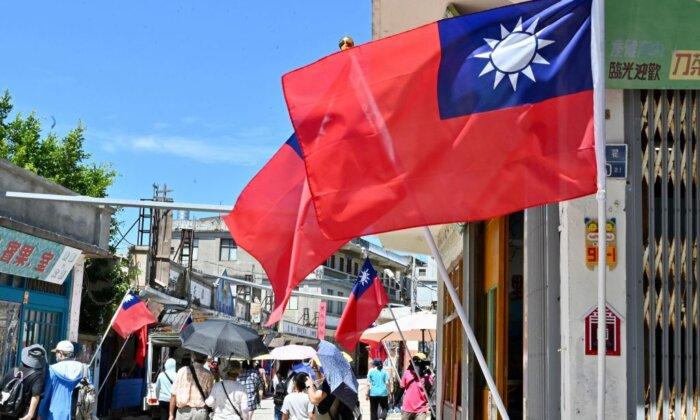According to FIFA, the earliest form of soccer was a Chinese invention.
Dating back some 2,400 years, the ancient Chinese game of Cuju shares key similarities with the modern sport—no hands or arms are allowed and goals are scored by kicking a ball through two posts. And like contemporary soccer, Cuju enjoyed massive popularity on a professional scale.
First mention of the sport appears in the Warring States-era text “Zhan Guo Ce.” It seems to have originated in eastern China’s Qi State.
By the Han Dynasty (206 B.C.—220 A.D.), the game was called Cuju, best translated as “kick ball.” The balls used were made of leather and filled with fur or hair. Texts from this era credit the game’s creation with the legendary yellow emperor, or, more realistically, soldiers looking to improve their footwork.
The game was incredibly popular for many centuries, to the point that it was played professionally among both commoners and in the imperial court. Liu Bang, founding emperor of the Han Dynasty, was a known Cuju enthusiast. This resulted in Cujiu becoming a more highly specialized sport. The imperial palace included a dedicated Cuju court where professional teams of 12 players each would face off.

Another Han emperor, the great Wu Di, was so fond of Cuju that he regularly had his attendants pen articles about the sport.
A Han Dynasty text established the rules and interpretation of Cuju. The round ball and the square court symbolized the traditional Daoist concepts of yin and yang. In comparison to modern soccer, the goals were small, moon-shaped holes and there were six of them at either end of the court. The 24 players and their team captains would elect a referee before the game, who was to mediate based on the regulations and according to the standards of fair sportsmanship.
Already in the Han Dynasty, Cuju’s popularity had reached obsessive levels. The “Shiji,” or Records of the Grand Historian, mentions the case of Xiang Chu, who kept playing Cuju despite the advice of his doctor, who had diagnosed him with a hernia. The stubborn fan eventually died of his illness playing his beloved sport.
Cuju enjoyed increasing popularity for over a dozen centuries. In China’s final imperial dynasty, the Qing (1644—1911), the game was modified to be played on skating rinks.
Peak and Decline
By the Tang and Song dynasties, Cuju was enjoyed by both men and women, and nobles and commoners. One ancient text depicts the splendid scene of a women’s match involving 153 people. The ladies, wearing four colors of embroidered silk clothing and sashes, played for an audience of tens of thousands.
In the 10th century, during the Song Dynasty, professional Cuju clubs appeared in many major Chinese cities. Individual players attained fame and fortune. These associations are considered the world’s first sports clubs.

The Cuju societies were selective. Nonprofessional players would formally take up study with experts and had to achieve a certain level of mastery before gaining acceptance to a club. Gao Qiu, a government official who served the Song Emperor Huizong, was known for his excellent skills in Cuju. A Cuju league, the Qiyun She, organized annual nationwide championships.
Emperor Taizu of the Song Dynasty was known for his freestyle Cuju, by which he made use of his head, shoulders, back, abdomen, and knees to control the ball, keeping it in the air for extended periods.
Cuju also features in one of the Four Great Chinese Novels, the “Outlaws of the Marsh.” The Cuju-playing official Gao Qiu appears as one of the antagonists, and is mentioned as being the Grand Marshall of the sport by decree of the emperor. During the Song period, as in the Han, Cuju was a frequent spectacle enjoyed in the imperial court.
Cuju fell into decline during the Ming Dynasty (1368–1644). The game became associated with brothels and decadence. Teams of prostitutes would organize and play Cuju in hopes of attracting more customers; officials and the nobility would neglect their duties of leadership to indulge in Cuju and other forms of entertainment. In an attempt to shape up his administration, Zhu Yuanzhang, founding emperor of the Ming, even banned the sport. As time went on, Cuju suffered from a poor reputation and began to go out of fashion. By modern times, Cuju had become extinct in China.
Though Cuju is a thing of the Chinese past, it survives in Japanese shrines, where a stylized version called kemari is performed. Kemari was introduced from continental Asia over 1,400 years ago during Japan’s Asuka period. Unlike Cuju, it is neither competitive nor professional; the object is to keep the ball airborne for as long as possible. Even in the 19th and 20th centuries, as Japan underwent extensive modernization, the sport received backing from the emperor and nobles, who helped preserve this ancient East Asian tradition.





